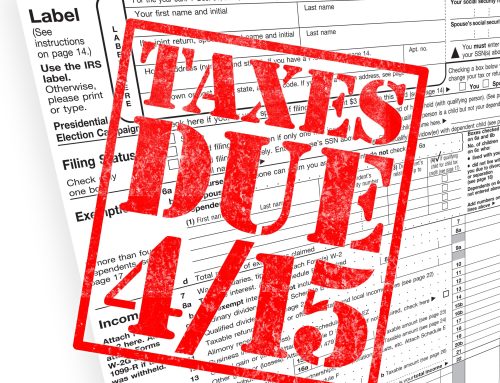We have compiled a checklist of actions based on current tax rules that may help you save tax dollars if you act before year-end. Regardless of what Congress does late this year or early next, solid tax savings can be realized by taking advantage of tax breaks that are on the books for 2011. For individuals, these include:
- the option to deduct state and local sales and use taxes instead of state and local income taxes;
- the above-the-line deduction for qualified higher education expenses; and
- tax-free distributions by those age 70-1/2 or older from IRAs for charitable purposes.
For businesses, tax breaks available through the end of this year that may not be around next year unless Congress acts include:
- 100% bonus first-year depreciation for most new machinery, equipment and software;
- an extraordinarily high $500,000 Section 179 expensing limitation (and within that dollar limit, $250,000 of expensing for qualified real property); and
- the research tax credit.
Not all actions will apply to your particular situation, but you will likely benefit from many of them. There also may be additional strategies that will apply to your particular tax situation. We can narrow down the specific actions that you can take once we meet with you. In the meantime, please review this list and contact us at your earliest convenience so we can advise you on which tax-saving moves to make. If you want to find out more or require help with your taxes, or tax planning, you might want to get in touch with someone similar to this Tax Lawyer Toronto or a law firm closer to you for more information.
Year-End Tax Planning Moves for Individuals
Be Aware of the Alternative Minimum Tax (AMT) – Keep in mind when considering year-end tax strategies that many of the tax breaks allowed for purposes of calculating regular taxes are disallowed for AMT purposes. These include deduction for state property taxes on your residence, state income taxes (or state sales tax if you elect this deduction option), miscellaneous itemized deductions, and personal exemption deductions. Other deductions, such as for medical expenses, are calculated in a more restrictive way for AMT purposes than for regular tax purposes. As a result, in some cases, these deductions should not be accelerated. This office has tax planning software that can analyze and minimize the effects of the AMT.
Employer Flexible Spending Accounts – If you contributed too little to cover expenses this year, you may wish to increase the amount you set aside for next year. Keep in mind, however, that you can no longer set aside amounts to get tax-free reimbursements for over-the-counter drugs.
Health Savings Accounts – If you become eligible to make health savings account (HSA) contributions in December of this year, you can make a full year’s worth of deductible HSA contributions for 2011.
Capital Gains and Losses – We can employ a number of strategies to suit your specific tax circumstances. For example, some taxpayers may be in the zero percent capital gains bracket and should be looking for gains that benefit from no tax. Others may be affected by the wash sale rules when they are trying to achieve deductible losses while maintaining their investment position. Generally, portfolios should be reviewed near year’s end with an eye to minimizing gains and maximizing deductible losses. It may be appropriate for you to call for a year-end strategy appointment to discuss trades and actions that can produce tax benefits for you.
Roth IRA Conversions – If your income is unusually low this year, you may wish to consider converting your traditional IRA into a Roth IRA. Even if your income is at your normal level, with the recent decline in the stock markets, the current value of your Traditional IRA may be low, which provides you an opportunity to convert it into a Roth IRA at a lower tax amount. Thereafter, future increases in value would be tax-free when you retire.
Recharacterizing a Roth Conversion – If you converted assets in a traditional IRA to a Roth IRA earlier in the year, you may have seen the assets decline in value due to the recent market decline, and you will end up paying higher than necessary taxes on that higher valuation. However, you may undo that rollover by recharacterizing the conversion by transferring the converted amount (plus earnings, or minus losses) from the Roth IRA back to a traditional IRA via a trustee-to-trustee transfer. You can later (generally after 30 days) reconvert to a Roth IRA.
IRA to Charity Transfer – This year may well be the last chance for taxpayers ages 70-1/2 or older to take advantage of an up-to-$100,000 annual exclusion from gross income for otherwise taxable individual retirement account (IRA) distributions that are qualified charitable distributions. Such distributions aren’t subject to the charitable contribution percentage limits and can’t be included in gross income. However, the contribution isn’t deductible.
Advance Charitable Deductions – If you regularly tithe at a house of worship, you might consider pre-paying part or all of your 2012 tithing and thus advancing the deduction into 2011. These pre-planned payments can be done much more easily online instead of in person. If your place of worship has the option to partake in online giving, you can schedule automated giving which takes up none of your time and is much more efficient. This can be especially helpful to individuals who marginally itemize their deductions, allowing them to itemize in one year and then take the standard deduction in the next.
Income Deferral – Depending upon your particular tax circumstances, it may be appropriate to defer income into 2012 if possible. For example, if you are receiving an employee bonus, you might ask your employer to defer it until 2012.
Income Acceleration – If your taxable income is unusually low because of lower income or larger deductions, you may be able to absorb additional income with no or minimal additional tax. In that case, you should consider accelerating income when possible without incurring penalties. This would include pension plan and IRA distributions and accelerated capital gains.
Prepay Tax Deductible Expenses – Consider prepaying tax-deductible expenses to increase your 2011 itemized deductions. For example, if you have outstanding dental bills, paying the balance before year-end may be beneficial, but only if you already meet the 7.5% of AGI floor for deducting medical expenses, or if adding the dental payments would put you over the 7.5% threshold. You can even use a credit card to prepay the expenses, but you would only want to do so if the interest expense you’d incur is less than the tax savings.
Prepay State Income Taxes – State income taxes paid during the year are deductible as an itemized deduction. As long as pre-paying the state taxes does not create an AMT problem and you expect to owe state and local income taxes next year, it may be appropriate to increase your withholding at your employment or make an estimated tax payment before the close of 2011, thereby advancing the deduction into this year.
Avoid Underpayment Penalties – If you are going to owe taxes for 2011, you can take steps before year-end to avoid or minimize the underpayment penalty. The penalty is applied quarterly, so making a fourth quarter estimate will not reduce the penalties applied to the first three quarters of the year. However, withholding is treated as paid ratably throughout the year, so increasing withholding at the end of the year can reduce the penalties for the earlier quarters. This can be accomplished with cooperative employers or by taking a non-qualified distribution from a pension plan, which will be subject to a 20% withholding, and then returning the gross amount of the distribution to the plan within the 60-day statutory limit. Please consult this office to determine if you will be subject to underpayment penalties (there are exceptions), and if so, the best strategy to avoid or minimize them.
Sales Tax – Without a congressional extension, 2011 is the final year in which you can elect to claim a state and local general sales tax deduction instead of a state and local income tax deduction. You may wish to accelerate big-ticket purchases into 2011 to assure yourself a deduction for sales taxes on the purchases, assuming the increased sales tax deduction is greater than the state and local tax amount. The deduction is extremely helpful in states with no state income tax.
Home Energy Credits – If you are a homeowner, making energy-saving improvements to your residence such as putting in extra insulation or installing energy saving windows and energy efficient heaters or air conditioners may qualify you for a tax credit, if the assets are installed in your home before 2012. The credit is 10% of the cost of the improvement with a cap of $500; the credit is reduced by any credit claimed in prior years for the purchase of other energy-saving property.
Education Credits and Deductions – If someone in your family is attending college and qualifies for an education credit, you can pre-pay the first three months of 2012’s tuition to reach the maximum credit for 2011. In addition, unless Congress extends it, the up-to-$4,000 above-the-line deduction for qualified higher education expenses expires after 2011. Thus, prepaying the first three months of 2012’s eligible expenses will increase your deduction for qualified higher education expenses.
Acquire Qualified Small Business Stock (QSBS) – If you have the opportunity, you may wish to acquire QSBS before the close of the year. Doing so won’t save taxes for 2011, but could benefit you in the future. A special provision of the tax code eliminates any tax from sale of QSBS if it is purchased after September 27, 2010 and before January 1, 2012, and is held for more than five years. In addition, such sales won’t cause AMT preference problems. To qualify for these breaks, the stock must be issued by a regular (C) corporation with total gross assets of $50 million or less. There are some other technical requirements, so call this office for additional details.
Don’t Forget Your Minimum Required Distribution – If you have reached age 70-1/2, you are required to make minimum distributions (RMDs) from your IRA, 401(k) plan and other employer-sponsored retirement plans. Failure to take a required withdrawal can result in a penalty of 50% of the amount of the RMD not withdrawn. If you turned age 70- 1/2 in 2011, you can delay the first required distribution to the first quarter of 2012, but if you do, you will have to take a double distribution in 2012. Consider carefully the tax impact of a double distribution in 2012 versus a distribution in both this year and next.
Take Advantage of the Annual Gift Tax Exemption – You can give $13,000 in 2011 to each of an unlimited number of individuals, but you can’t carry over unused exclusions from one year to the next. The transfers also may save family income taxes when income-earning property is given to family members in lower income tax brackets who are not subject to the kiddie tax.
Year-End Tax-Planning Moves for Businesses & Business Owners
Expensing Allowance (Sec 179 Deduction) – Businesses should consider making expenditures that qualify for the business property expensing option. For tax years beginning in 2011, the expensing limit is $500,000, and the investment ceiling limit is $2,000,000. Without Congressional intervention, these limits are scheduled for a significant drop in 2012. That means that businesses that make timely purchases will be able to currently deduct most, if not all, of the outlays for machinery and equipment. Additionally, for 2011, the expensing deduction applies to certain qualified real property such as leasehold improvements, restaurant, and retail property.
100% First-year Depreciation – Businesses also should consider making expenditures that qualify for 100% bonus first-year depreciation if the property is bought and placed in service this year. This 100% first-year write-off rate drops to 50% next year unless Congress acts to extend it. Thus, enterprises planning to purchase new depreciable property this year or next should try to accelerate their buying plans if doing so makes sound business sense.
Work Opportunity Tax Credit (WOTC) – Take advantage of the WOTC by hiring qualifying workers, such as qualifying veterans, before the end of 2011. Unless extended by Congress, the WOTC won’t be available for workers hired after this year.
Research Credit – Make qualified research expenses before the end of 2011 to claim a research credit, which won’t be available for post-2011 expenditures unless Congress extends the credit.
Self-employed Retirement Plans – If you are self-employed and haven’t done so yet, you may wish to establish a self-employed retirement plan. Certain types of plans must be established before the end of the year to make you eligible to deduct contributions made to the plan for 2011, even if the contributions aren’t made until 2012. You may also qualify for the pension start-up credit.
Increase Basis – If you own an interest in a partnership or S corporation that is going to show a loss in 2011, you may need to increase your basis in the entity so you can deduct the loss, which is limited to your basis in the entity.
These are just some of the year-end steps that can be taken to save taxes. You are encouraged to contact this office so a plan can be tailored to meet your specific tax and financial circumstances.
Business Benefits Abound This Year
There are an abundant number of provisions that provide Sacramento tax relief to small businesses this year. Just so that you don’t overlook any of these benefits, or in case your business would like to position itself to take advantage of some before the close of the year, here is a brief rundown on many of the business benefits that are available for 2011. Some of these provisions are currently set to expire after December 31, 2011.
oResearch Tax Credit – A tax credit of up to 20% of qualified expenditures for businesses that develop, design, or improve products, processes, techniques, formulas, or software or perform similar activities. The credit is calculated on the basis of increases in research activities and expenditures.
- Work Opportunity Tax Credit – A tax credit of up to 40% based upon a portion of the first-year wages paid to members of certain targeted groups. The credit is generally capped at $6,000 per employee ($12,000 for qualified veterans and $3,000 for qualified summer youth employees).
- Differential Wage Payment Credit – Employers who have an average of less than 50 employees during the year and who pay differential wages to employees for the periods they were called to active duty in the U.S. military can claim a credit equal to 20% of up to $20,000 of differential pay made to an employee during the tax year.
- HIRE Retention Credit – In 2010, employers were granted a payroll tax holiday for hiring long-term unemployed individuals. As an incentive to retain those individuals, a non-refundable credit up to $1,000 per employee is allowed to employers who kept those employees on payroll for a continuous 52 weeks. The credit is limited to 6.2% of the employee’s wages, and will be claimed on the 2011 return.
- New Energy Efficient Home Credit – An eligible contractor can claim a credit of $2,000 or $1,000 for each qualified new energy efficient home either constructed by the contractor or acquired by a person from the contractor for use as a residence during the tax year.
- 100% Bonus Depreciation – Businesses are allowed a 100% bonus depreciation on qualified business property purchased and placed into service during the year. This generally includes machinery, equipment, computers, qualified leasehold improvements, etc. (but see limitations on vehicles).
- Expensing Allowance – In lieu of depreciating the cost of new assets, a business is allowed to deduct up to $500,000 expensed under Code Sec. 179. The $500,000 maximum amount is generally reduced dollar-for-dollar by the amount of Section 179 property placed in service during the tax year in excess of $2,000,000.
- 15-year Write-off for Specialized Realty Assets – Qualified leasehold improvement property, qualified restaurant property, and qualified retail improvement property placed in service during the year are eligible for a 15-year depreciation write-off instead of the normal 39 years.
- Business Autos – As part of the benefit of the 100% depreciation, the first-year luxury auto limit is increased to $11,060 for autos and $11,260 for light trucks and vans. For vehicles with a gross vehicle rating of over 6,000 pounds, the luxury auto limits do apply and are subject to the full benefit of the 100% bonus depreciation.
- Domestic Production Deduction – This deduction was created to encourage manufacturing and production within the U.S. and provides a deduction equal to 9% of the lesser of net income from qualified production activities or 50% of the W-2 wages paid to employees allocated to the domestic production activity.
If you have questions or wish more detail on any of the provisions or other business issues, please give this office a call.






